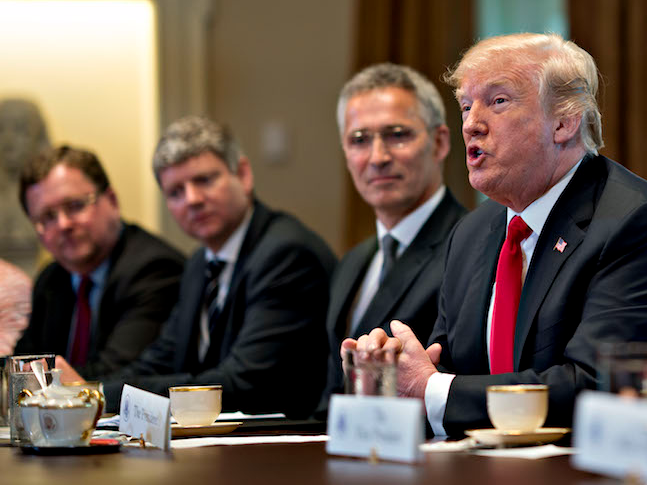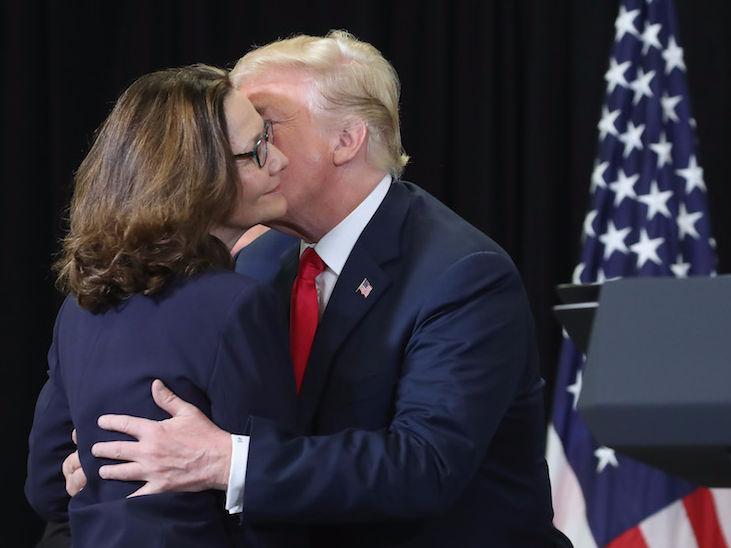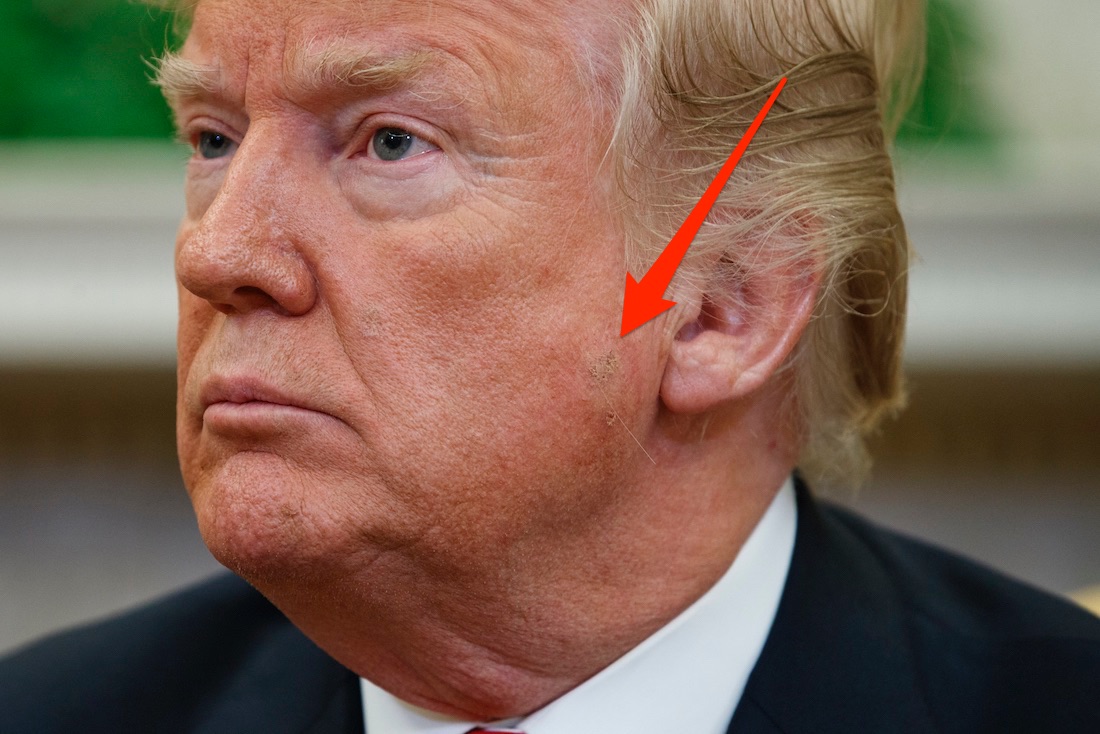President Donald Trump’s skin has been a hot topic of debate for years.
Recently, the internet lit up with a new question about the president’s skin: what is that discolored circle on the left side of his face?
We know a bit about Trump’s skin-care habits and medical conditions already. He has rosacea, a reddening skin condition that he takes antibiotics to combat. Makeup artists have also speculated that Trump’s facial coloring suggests he uses self-tanner or a tanning bed. Plus, the president enjoys being out in the sun – he has logged more than 100 golf course visits during his 16 months in office, which is enough to work up a golfer’s tan.
But according to dermatologist Kathleen Suozzi from the Yale School of Medicine, the barnacle-looking patch of skin on Trump’s face is probably not a sun spot, and it likely has nothing to do with his rosacea or tanning regimen, either.
Suozzi needed only a quick glance at a recent photo of Trump to venture a guess: it's likely a skin growth called keratosis.
Here's her full assessment.
Last week, around the time the president sat down with some NATO leaders at the White House, people started to notice the discolored spot on the left side of Trump's face.

"I haven't been able to stop thinking about it," HuffPost reporter Ashley Feinberg said in a tweet.
"It's probably one of two things," Suozzi told Business Insider. Both options are versions of keratosis, the term for a buildup of keratin proteins on the skin.

Keratin filaments in our cells are essential for growing hair, skin, and nails.
The first option is seborrheic keratosis: a benign, non-cancerous type of skin growth that's kind of like a brown barnacle, Suozzi said.

This kind of growth is sometimes referred to as a senile wart.
"Those are kind of random," Suozzi said. "You're partly genetically predisposed to them, and they're also worse in patients that have more sun damage."
But if it's not a seborrheic barnacle, the spot could be something more dangerous.
The other option is an actinic keratosis, Suozzi said, which can cause cancer in rare cases. This typically develops in fair-skinned people over the age of 30 who've seen a lot of sun.

"The risk of any one of them becoming a skin cancer is pretty low," Suozzi said. "Somewhere from one in 100 to one in 1,000."
Keratosis is a fairly common problem, especially for people like Trump with fair skin and light eyes.

One of the most common, effective ways to treat keratosis spots is to freeze them.
That's what Suozzi thinks Trump opted to do. "Donald Trump was recently frozen," she said.

That's "inflammation from, likely, liquid nitrogen treatment," Suozzi said. "That would be my educated guess."
She said the key clue is the little circle of white and red around the affected area on his cheek, which can be seen in this photo taken on Monday.
But the freezing treatment for keratosis spots doesn't always work, and can leave that patch of skin lightened.

